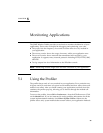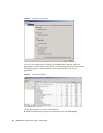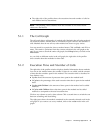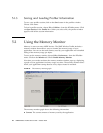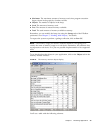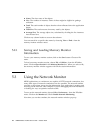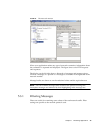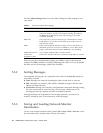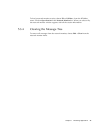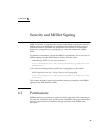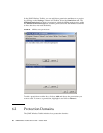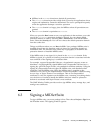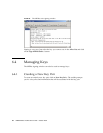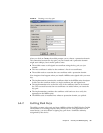
46 J2ME Wireless Toolkit User’s Guide • October 2004
Press the Filter Settings button to use the filter. Change the filter settings to suit
your needs.
When you are done entering filter settings, press OK to return to the network
monitor. The Filter checkbox is checked, indicating that a filter is in use. To disable
the filter and see all messages, uncheck the checkbox.
5.3.2 Sorting Messages
To arrange the message tree in a particular order, click on the Sort By combo box
and choose a criteria.
■ Time. Messages are sorted in chronological order of time sent or received.
■ URL. Messages are sorted by URL address. Multiple messages with the same
address are sorted by time.
■ Connection. Messages are sorted by communication connection. Messages using
the same connection are sorted by time. This sort type enables you to see
messages grouped by requests and their associated responses.
Sorting parameters are dependent on the message protocol you choose. For
instance, sorting by time is not relevant for socket messages.
5.3.3 Saving and Loading Network Monitor
Information
To save your network monitor session, choose File > Save or File > Save As... from
the network monitor window menu. Choose a file name.
TABLE 5 Network monitor filter settings
Network Protocol Filter Settings
HTTP/HTTPS Enter text to match the various parts of HTTP messages: URL,
status line, headers, or body. For example, entering “slashdot” in
the URL field would filter to show only messages whose URL
contained “slashdot”.
SMS/CBS You can specify a protocol, message type, and direction to match.
Furthermore, you can enter text to match in the sender, receiver,
and message content.
MMS Enter text to match the direction, sender, receiver, and copied (cc)
and blind copied (bcc) receivers. In addition, you can filter on the
subject, content ID, content location, MIME type, and encoding.
OBEX/SPP/L2CAP You can filter using the URL or header content.
Socket/SSL/
Datagram/Comm
Enter text to match in either the connection string (URL) or content.




